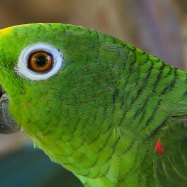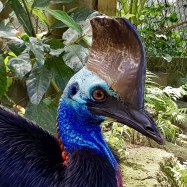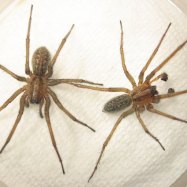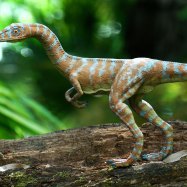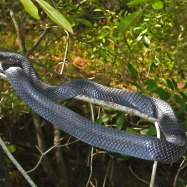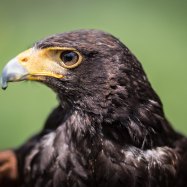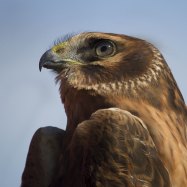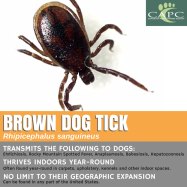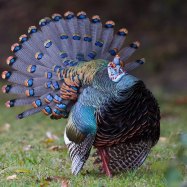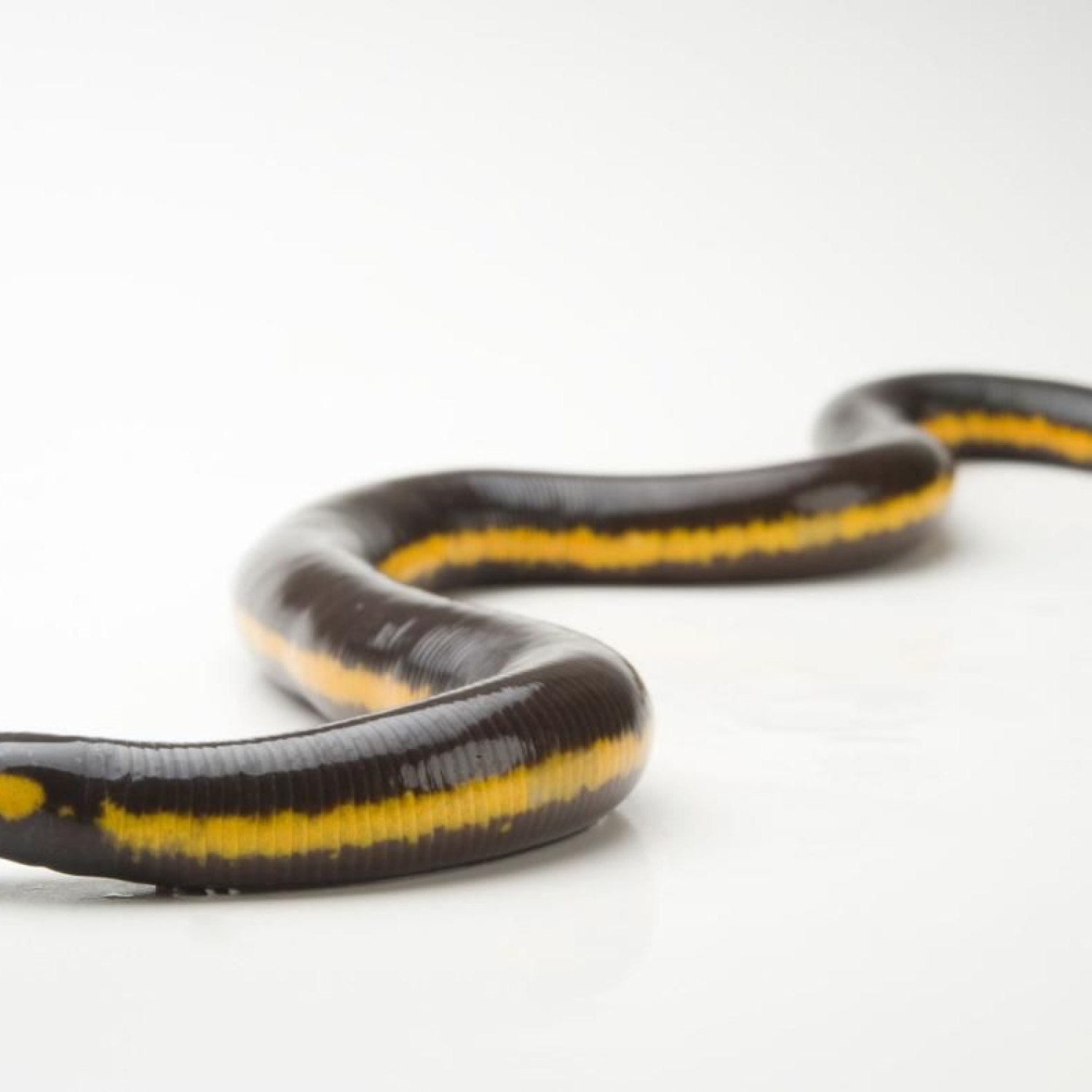
Caecilian
Up to 1.5 meters (5 feet)
Did you know that Caecilians, a type of limbless amphibian, can grow up to 1.5 meters or 5 feet in length? These fascinating creatures live underground and have a long and cylindrical body shape, resembling a worm. Caecilians come from a variety of families and are found in tropical regions around the world. Next time you spot something wriggling underground, it could be a Caecilian! #Caecilian #UndergroundLife #Amphibians
Animal Details Summary:
Common Name: Caecilian
Kingdom: Animalia
Habitat: Tropical and subtropical regions, primarily underground
A Closer Look at the Fascinating Caecilian
Amphibians are often associated with cute and colorful frogs and salamanders, but there's one lesser-known order that is often overlooked - the Caecilians. These fascinating creatures may look like giant worms, but they are actually a unique and diverse group of animals that are more closely related to frogs and salamanders than they are to earthworms. In this article, we'll dive into the world of caecilians and discover what makes them stand out in the animal kingdom.What is a Caecilian?
Caecilians (pronounced seh-silly-ans) belong to the order Gymnophiona, which translates to "naked serpents" in Greek Caecilian. They are also known as apoda, which means "without limbs", and this name is quite fitting as caecilians have very small, almost invisible limbs hidden under their skin. Most species of caecilians have long, cylindrical bodies that can reach up to 1.5 meters (5 feet) in length, making them the largest of the three orders of amphibians.Physical Characteristics
Caecilians have a unique body shape that sets them apart from other amphibians. Their long, cylindrical bodies are perfectly adapted for their underground lifestyle. They have smooth, moist skin that is usually dark-colored, and some species even have tiny scales embedded in their skin. Their eyes are small and their ears are concealed under their skin, as they rely more on their sense of smell and vibrations to navigate through their subterranean habitat.Habitat and Distribution
Caecilians are found primarily in tropical and subtropical regions of Africa, Asia, and the Americas. They are typically found in dense forest floors, damp soils, and in streams or pools Cane Corso. These habitats provide them with the perfect conditions for their underground lifestyle, as they can easily burrow through soft soil and find food sources.Diet and Feeding
Caecilians are carnivorous and have a very unique feeding method. With their small eyes and poor vision, they are not skilled hunters. Instead, they rely on their strong sense of smell to detect prey and their shovel-shaped heads to help them dig into the soil. Once they locate a potential meal, they use their sharp teeth to grab and swallow their prey whole. Their diet consists of a variety of invertebrates, including worms, termites, ants, and even snails.Reproduction and Life Cycle
Compared to other amphibians, there is still much to learn about the reproductive habits of caecilians. Most species are thought to be oviparous, laying eggs that hatch into larvae and then metamorphose into adults. However, there are some species that give birth to live young, a process known as viviparity. While some species lay eggs directly into the soil, others care for their eggs until they hatch. In some species, the mother will provide nutrition to her developing young by secreting a nutritious fluid from her skin, which the young feed on through their specialized teeth.Threats and Conservation Status
Due to their elusive nature and underground lifestyle, there is still much to learn about the different species of caecilians and their population status. However, like many amphibians, caecilians are facing various threats and challenges such as habitat loss, pollution, and climate change. The International Union for Conservation of Nature (IUCN) currently lists one species of caecilian as Critically Endangered, four as Endangered, and 12 as Data Deficient.The Versatility of Caecilians
One of the most remarkable things about caecilians is their adaptability to different environments and their unique characteristics that sets them apart from other amphibians. Here are some interesting facts about caecilians that you may not have known.Living Underground
Unlike other amphibians, caecilians have adapted to a subterranean lifestyle. Their long, slender bodies, reduced limbs, and specialized teeth make them perfectly equipped for living in the dark and damp underground environment. They can easily burrow through soft soil using their shovel-shaped heads and are able to sense vibrations in the soil to navigate through their surroundings.No Lungs, No Problem
While most amphibians have lungs to breathe, caecilians have evolved to breathe through their skin. This allows them to elongate their bodies and squeeze through narrow crevices in their underground habitats to escape predators or find food. Their moist skin also helps them stay hydrated and absorb oxygen from the soil.Masters of Regeneration
Like other amphibians, caecilians have the remarkable ability to regenerate lost body parts. However, they take this to a whole new level. Not only can they regenerate lost limbs, but they can also regenerate their eyes and portions of their brain. This makes them a true powerhouse in the animal kingdom when it comes to regeneration.Mimicking Snakes
While caecilians are not venomous, their appearance can be quite similar to snakes, which can be a form of protection against predators. Some species even have a hooded appearance similar to that of a cobra. However, their skin is completely smooth, unlike snakes, which have distinct scales.Interpretations and Legends
Throughout history, caecilians have fascinated people, and in some cultures, they hold important meanings and legends. In India, caecilians are believed to bring good luck and are often associated with fertility and prosperity. In West Africa, they are a symbol of the underworld and hold a place in traditional healing practices. In Haiti, they are thought to have mystical powers and are used in religious ceremonies.In addition, several different myths and legends are associated with caecilians, especially due to their secretive underground lifestyle. Some legends say that they can transform into snakes, while others describe them as creatures that guard hidden treasures deep underground.
In Conclusion
The world of caecilians may be shrouded in mystery, but the more we learn about these fascinating creatures, the more we realize just how unique and important they are. From their adaptability to their underground lifestyle to their fantastic regenerative abilities, caecilians are truly one of a kind. As we continue to study and understand more about these elusive creatures, we can strive towards protecting and conserving their habitats to ensure their survival for generations to come.

Caecilian
Animal Details Caecilian - Scientific Name: Gymnophiona
- Category: Animals C
- Scientific Name: Gymnophiona
- Common Name: Caecilian
- Kingdom: Animalia
- Phylum: Chordata
- Class: Amphibia
- Order: Gymnophiona
- Family: Various
- Habitat: Tropical and subtropical regions, primarily underground
- Feeding Method: Carnivorous
- Geographical Distribution: Africa, Asia, and the Americas
- Country of Origin: Depends on the species
- Location: Underground
- Animal Coloration: Varies, usually dark-colored
- Body Shape: Long and cylindrical, worm-like
- Length: Up to 1.5 meters (5 feet)
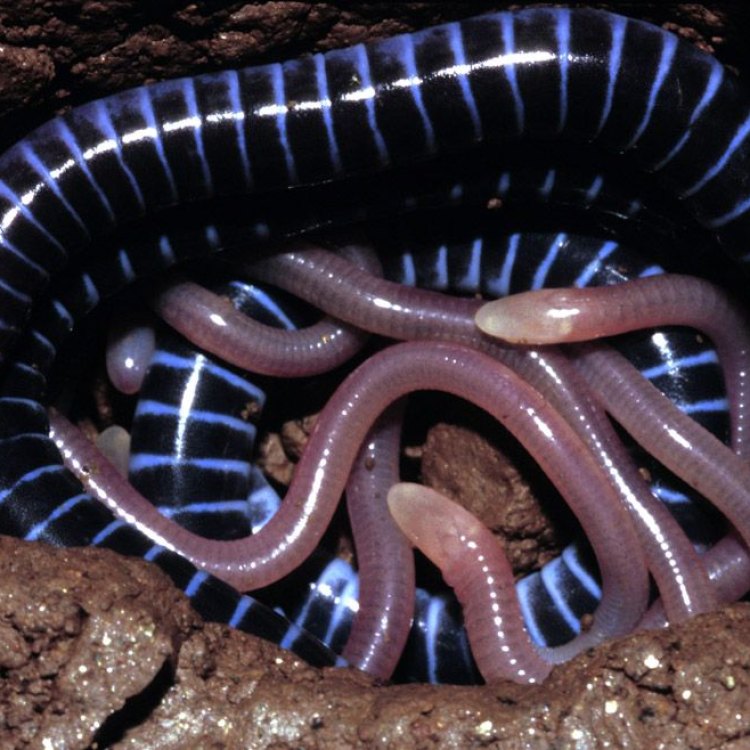
Caecilian
- Adult Size: Varies depending on the species
- Average Lifespan: Around 10-15 years
- Reproduction: Oviparous (egg-laying)
- Reproductive Behavior: Depends on the species
- Sound or Call: Most caecilians are not known to produce vocalizations
- Migration Pattern: Some caecilians may undertake seasonal migrations
- Social Groups: Solitary or social depending on the species
- Behavior: Primarily nocturnal and burrowing
- Threats: Habitat loss, pollution, and collection for the pet trade
- Conservation Status: Varies depending on the species
- Impact on Ecosystem: Caecilians play important roles in soil health and nutrient cycling
- Human Use: Some species are used in traditional medicine
- Distinctive Features: Lack of limbs, elongated body, and sensory tentacles on the head
- Interesting Facts: Caecilians are often mistaken for snakes or worms due to their appearance
- Predator: Various predators including birds, reptiles, and mammals
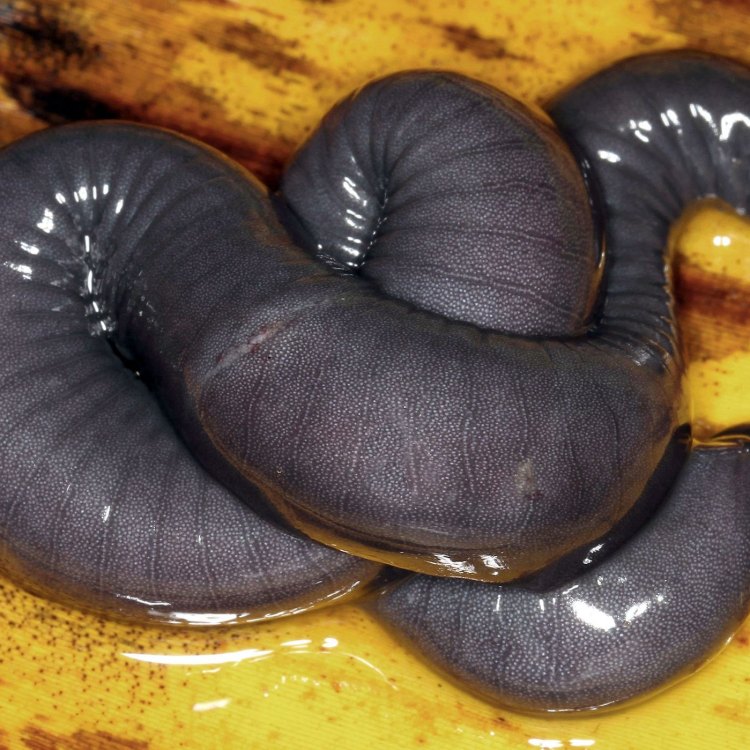
Gymnophiona
The Secretive World of Caecilians: Uncovering the Unique Features of These Legless Amphibians
When we think of amphibians, the first images that come to mind are usually frogs, toads, or salamanders. But there is one group of amphibians that often goes unnoticed, hidden beneath the ground in the depths of the rainforest – the caecilians.These elusive creatures are a fascinating group, with unique features and behaviors that set them apart from their more well-known amphibian relatives. From their lack of limbs to their mysterious reproductive behavior, let's dive into the secretive world of caecilians and discover what makes these legless creatures truly remarkable PeaceOfAnimals.Com.
Adaptations for a Burrowing Lifestyle
Caecilians belong to the order Gymnophiona, which literally translates to "naked snakes". However, despite their snake-like appearance, they are actually more closely related to salamanders and frogs.
One of the most distinctive features of caecilians is their lack of limbs. Instead, they have an elongated, cylindrical body that allows them to burrow deep into the soil and leaf litter. Their skin is also uniquely adapted to this lifestyle, with tiny scales that give them a smooth, almost slimy appearance.
But how do these limbless creatures move through the ground? The answer lies in their remarkable musculature. Caecilians have strong, circular muscles that allow them to stretch and contract their bodies, similar to a worm. This allows them to move through the soil with ease, as they push and pull their way through the ground.
Mastering the Art of Camouflage
Being primarily nocturnal, caecilians have also evolved to perfect the art of camouflage Cotton Top Tamarin. Their bodies come in a range of colors and patterns, from shades of brown and black to bright yellows and oranges, helping them blend into their surroundings.
But perhaps their most impressive camouflage trick is the ability to shed their skin. As they burrow through the soil, the outermost layer of their skin gets worn out and damaged. To maintain their sleek appearance and remain hidden from predators, caecilians shed their skin in large pieces, almost like a snake. This also helps them to get rid of any parasites that may be hiding on their skin.
Sensory Tentacles for Navigating the Dark
Living in the dark, subterranean world of the rainforest presents unique challenges for caecilians. To overcome these challenges, they have developed distinctive sensory tentacles on their heads. These tentacles are made up of specialized skin cells that allow them to detect vibrations and chemical cues in the soil. This helps them to navigate through the dark and locate their prey, which mainly consists of small invertebrates such as worms and insects.
Reproduction: Egg-Laying and Surrogate Mothers
One of the most intriguing aspects of caecilians is their reproductive behavior, which varies depending on the species. Some caecilians are oviparous, meaning that they lay eggs, while others are viviparous, meaning that they give birth to live young.
For those that lay eggs, the female will often wrap her body around the eggs, acting as a surrogate mother. She will then constantly moisten the eggs with her skin secretions to prevent them from drying out. Once the eggs hatch, the mother will continue to protect and care for her offspring until they are capable of fending for themselves.
Playing an Important Role in Ecosystem Health
Aside from their unique features and behaviors, caecilians also play an important role in maintaining ecosystem health. As they burrow through the soil, they help to aerate it and increase its fertility, allowing for better plant growth. They also aid in nutrient cycling by consuming and breaking down leaf litter and other organic matter. Without caecilians, the soil would become compact and lacking in essential nutrients, which would greatly impact the health of the rainforest ecosystem.
Threats to Caecilians
Unfortunately, caecilians face many threats in their natural habitat, primarily due to human activities. Habitat loss from deforestation and human development is one of the main threats facing these creatures. As they are dependent on the soil and leaf litter for survival, any disturbance to their habitat can have a severe impact on their population.
Pollution is another significant threat, especially in areas where caecilians live near streams or bodies of water. Chemical pollutants from agriculture and industrial activities can seep into the ground and contaminate the soil, which can harm or even kill caecilians.
Additionally, some species of caecilians are collected and traded on the black market for the pet trade. Not only does this harm their population, but it can also result in the spread of diseases to other animals and even humans.
Preserving the Secretive World of Caecilians
Many caecilian species are still poorly studied and understood, due to their elusive nature and the difficulty in finding and studying them in the wild. Experts estimate that there may be many undiscovered species of caecilians waiting to be discovered in the depths of the rainforest.
To ensure the preservation of these unique creatures, conservation efforts are needed. This includes protecting their natural habitats and educating the public about the significance of caecilians in the ecosystem. It is crucial to have a better understanding of their behavior, habitats, and population sizes for effective conservation measures to be put in place.
Human Use: Caecilians in Traditional Medicine
While caecilians may not be well-known in western medicine, they play a significant role in traditional medicine in many parts of the world. In some cultures, caecilians are believed to have healing properties and are used in traditional medicines to treat various ailments and illnesses.
However, this traditional use of caecilians can also have a negative impact on their populations, as they are often collected from the wild, leading to a decline in their numbers. It is essential to find a balance between the traditional use of caecilians and their conservation to ensure their survival.
Fascinating and Misunderstood Creatures
Despite their crucial role in ecosystem health and their unique features and behaviors, caecilians are often overlooked and misunderstood. Mistaken for snakes or worms, these creatures remain hidden in the depths of the rainforest, playing an essential role in maintaining the delicate balance of the ecosystem.
As we continue to learn more about caecilians and their ecological role, it is essential to protect and conserve their natural habitats and create a better understanding of these elusive and fascinating creatures. Who knows what other secrets the world of caecilians may hold, waiting to be uncovered and explored.
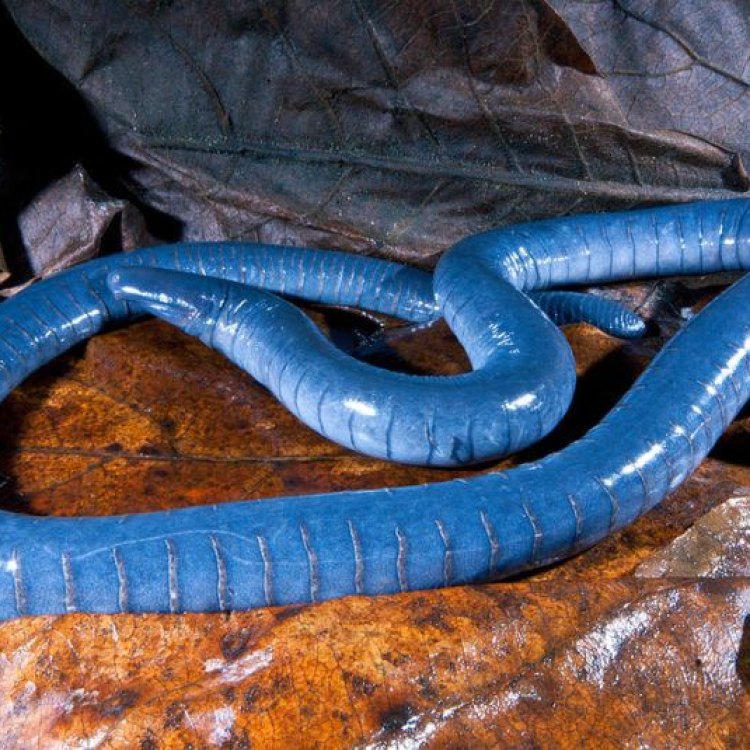
A Closer Look at the Fascinating Caecilian
Disclaimer: The content provided is for informational purposes only. We cannot guarantee the accuracy of the information on this page 100%. All information provided here may change without prior notice.


